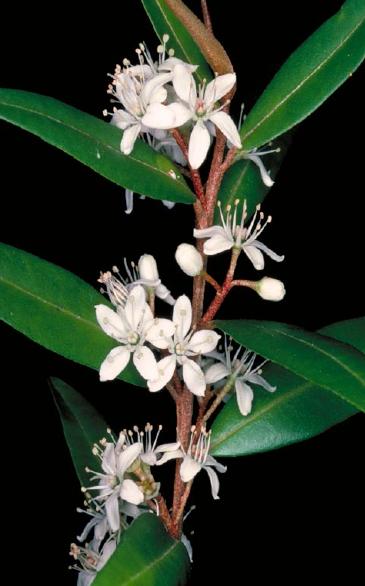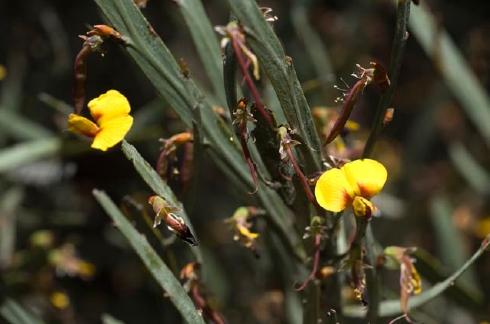Wombat forest rare plants project
By Murray Ralph

Nematolepis squamea subsp. squamea (photo © M.Fagg, Australian National Botanic Gardens)
Wombat Forestcare has a new project based around rare and threatened plant species. The project involves locating sites in the Wombat State Forest where selected rare plants have been previously recorded, then assessing those sites in relation to current population size, threats and management issues (e.g. weed invasion). If appropriate, seed or propagation material could be collected from the plants to enable enhancement plantings to be undertaken.
Four rare species have been selected: Swamp Bush-pea (Pultenaea weindorferi), Dense Mint Bush (Prostanthera decussata), Satinwood (Nematolepsis squamea) and Wombat Bossiaea (Bossiaea sp. Aff. bracteosa).
By concentrating on rare species, the project will be a strategic way to contribute to the conservation of biodiversity in the Wombat Forest. As an added bonus we will be getting out into different parts of the forest on a regular basis. The Flora and Fauna section at DSE are very supportive of the project, and have provided us with laminated pictures and records of sightings.
DSE’s concern for locating rare plants has increased since the only known population of the endangered shrub, Shiny Nematolepis (Nematolepis wilsonii) was decimated by the fire at Marysville earlier this year (luckily a botanist had taken cuttings the year before and plants have been propagated). As Wombat Bossiaea is also only known at one location in Australia and it has not been seen for many years, it is of particular interest to DSE.
The details of sightings of Wombat Bossiaea read like a detective novel. The plant was first seen in the Wombat Forest in 1982 by the renowned amateur botanist, Cliff Beauglehole.
In 1995 botanists from the National Herbarium of Victoria spent a day searching for the species but were unable to locate the specimen. However, luckily, as they were driving out of the forest they spotted a specimen in full f lower on the side of a forest track. Later it was identified as a completely new species which only occurred in the Wombat Forest.
Several attempts were made to collect seed, but the plants failed to set fruit. Since then the plant has not been sighted, so both DSE and Wombat Forestcare are very keen to find it and possibly other populations. Although the herbarium records cannot be obtained, a number of clues as to the location of the plant are provided in a paper prepared by the herbarium botanists. Based on these clues we will begin our search. Another rare species listed for the Wombat Forest is Satinwood (Nematololepis squamea subsp squamea).

Bossiaea bracteosa (photo © M.Fagg, Australian National Botanic Gardens)
Two of these plants were identified in 1994 near Barkstead. We had previously attempted to find these but uncertain of the exact location our efforts failed. With the additional data to hand their location may be revealed.
